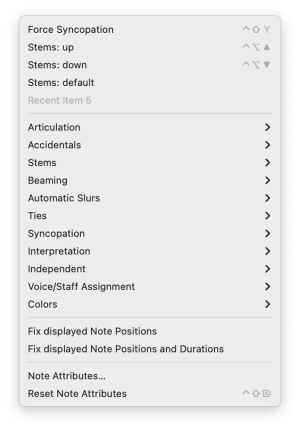Yea, and not just curves, but scaling curves – where the result will be a mix of the newly drawn curve and the original velocities.think folks are looking for how to draw curves rather than a line.
Last edited:
Yea, and not just curves, but scaling curves – where the result will be a mix of the newly drawn curve and the original velocities.think folks are looking for how to draw curves rather than a line.
Can you do this sort of scaling with the step sequencer? Drawing curves freehand is easy in the step sequencer, but I don't know how to apply a curve and scale it in one step.Yea, and not just curves, but scaling curves – where the result will be a mic of the newly drawn curve and the original velocities.
Ah, ok. My bad.I think folks are looking for how to draw curves rather than a line.
No, you need to use two MIDI editors for that.Can you do this sort of scaling with the step sequencer? Drawing curves freehand is easy in the step sequencer, but I don't know how to apply a curve and scale it in one step.
You can kinda fake it till you make it using this method but if you don't get it right first 'guess' (never do) and you want to start and finish on a particular velocity, it's a hell of a lot of faffing around.Maybe I'm completely misunderstanding, but it is not something like this you mean?
View attachment Screen-Recording.mp4
Thanks, I think I need to take another look at this.You can draw whatever curve you want on the velocities in step editor. They all change to conform. But you have to show all the velocities to edited them as a group.
I hadn't tried the 32 buffer when I wrote this, assuming that it wouldn't work well. But it does!When combining these settings, I get glitch free playback of 40 CSS V1 legato tracks on a 2020 i7 iMac, using the 64 buffer. Each track had two active mics, and there was CC1 automation (Dynamics) on all tracks, all the time.
| 2736 | MacBook Pro (16-inch, 2023), 3.7 GHz, 12 core | |
| 2639 | MacBook Pro (16-inch, 2023), 3.5 GHz, 12 core | |
| 2634 | MacBook Pro (14-inch, 2023), 3.5 GHz, 12 core | |
| 2633 | MacBook Pro (14-inch, 2023), 3.5 GHz, 10core | |
| 2579 | MacBook Pro (13-inch, 2022), 3,5 GHz, 8 core | |
| 2563 | MacBook Air (2022), 3.5 GHz, 8-core | |
| 1613 | https://browser.geekbench.com/macs/imac-27-inch-retina-mid-2020-intel-core-i7-10700k-3-8-ghz-8-cores (iMac (27-inch Retina Mid 2020)), 3.8 GHz, 8-core |





You can do that with the MIDI Transform window. Use the relative crescendo feature.Hey @Vik, whilst you're on a roll, any tips for the simplest way to go from this;

to this;

To me, the line tool is a complete pain and pretty much useless. The scale and select (CMD click) is maybe the least helpful and least intuitive software element in existence. In cubase, you can just draw a line and the midi scales relative and perfectly. Am I the only logic user that HATES the way logic handles this?



Try this:I think folks are looking for how to draw curves rather than a line.






Kis there a key command to select "keep"?
oh thx
audio music apps > iconsholy crap that's awesome, I had no idea we could do that. Do you know if the image is added somewhere for future projects or just saved with the project?
 Otherwise you have to edit all the time to keep updated.
Otherwise you have to edit all the time to keep updated. That's a really cool trick. I had no idea!(Copied from a discussion in another thread)
An alternative to edit pitch/velocity of existing MIDI notes
When you double-click on the (red, in the image below) MIDI In icon in a Logic MIDI editor, it will look like this:

In that mode, you can edit the pitch of a selected MIDI note by playing a note with a different pitch on a connected MIDI keyboard.
Use the right (left) arrows on your Mac keyboard to select the following (previous) notes and edit those pitches as well.
This process will also edit the velocity of an existing note.
This is really cool!- Open the MIDI plugin called Velocity.
- When Region Automation is enabled, select the parameter 'Make-up:

